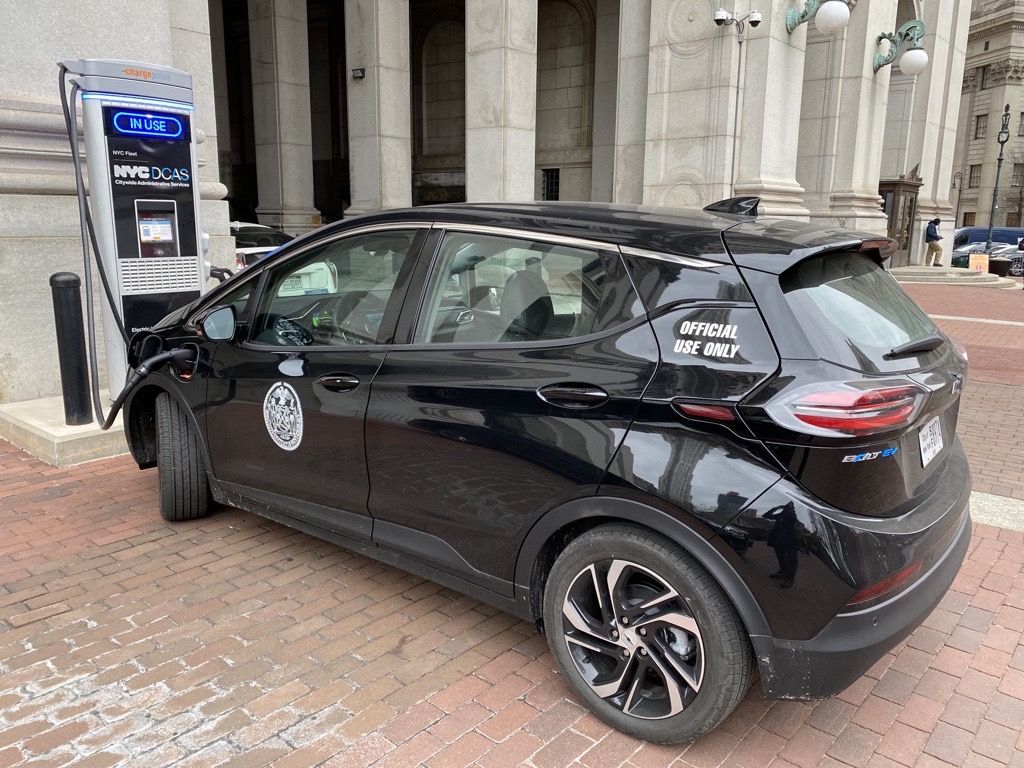Testimony to the City Council Regarding Intro 279 Legislation on Electrifying the City of New York’s Fleet

On behalf of the NYC Comptroller’s Office, thank you to the Committee on Environmental Protection for convening this hearing. We would also like to thank Council Member Powers for introducing Intro 279 and Chair Gennaro for the opportunity to provide testimony on this legislation. We are pleased to support Intro 279 and the steps outlined in the bill to electrify New York City’s municipal fleet. Transitioning the fleet to zero emissions vehicles will cement the City’s position as a climate leader and make strides towards reducing greenhouse gas emissions, developing the market for electric vehicles, and mitigating transportation-derived air pollution.
New York City maintains nearly 30,000 vehicles, making our municipal fleet the largest in the country. Fuel costs for a fleet of this size total tens of millions of dollars each year. Data shared with our office revealed that the City spent a record $108 million on gasoline during the last fiscal year. This represents a 58% increase from the previous year, due largely to rising fuel costs. Overall fuel efficiency for fleet vehicles decreased in the same period, dropping from 7.1 to 6.7. The amount of fuel used by the City fleet is also trending in the wrong direction, growing from 25.7 million gallons in FY21 to 25.9 million in FY22. This level of fuel usage, and the hundreds of millions of miles City vehicles drive each year, translate to avoidable carbon emissions and air pollutants jeopardizing New Yorkers’ health, safety, and quality of life.
30% of greenhouse gas emissions in New York City come from the transportation sector, the second highest of any source. A rapid transition to electric vehicles is an important strategy for decarbonizing the transportation sector and mitigating the impacts of climate change. While replacing every vehicle on the road with an electric one is a long-term goal, the City Department of Citywide Administrative Services (DCAS) has already succeeded in transitioning 4,000 vehicles in the fleet to electric vehicles, achieving this milestone three years ahead of schedule. Intro 279 can build on this progress and accelerate the shift to a low- or no-carbon fleet.
In addition to the steps outlined in this legislation, there are actions the administration can take in the immediate and medium-term to improve sustainability outcomes and lead on climate via the municipal fleet. A safer and more sustainable streetscape depends not only on switching from gasoline-powered vehicles to electric ones but reducing the use of automobiles altogether. Downsizing the overall size of the fleet as well as the vehicles in it can yield climate and safety benefits. Larger, heavier vehicles, primarily trucks and sports utility vehicles (SUVs) consume more fuel, emit more carbon, and pose greater safety risks to other road users, especially pedestrians and cyclists. A nationwide study of traffic fatalities concluded that cities that saw growth in large vehicles suffered greater rates of pedestrian fatalities and that replacing SUVs with sedans might have averted nearly 3,300 pedestrian deaths over the past twenty years. This has borne out in New York City, where there were as many as 17,340 crashes involving SUVS and a tragic toll of 92 deaths relating to SUV incidents in 2021 alone. SUVs are also major contributors to the climate crisis. According to the International Energy Agency (IEA), cumulative emissions from SUVs amount to more than the emissions of all but five countries worldwide.
Simply replacing such vehicles with electric models leaves potential safety and climate gains unrealized. The sheer size and weight of SUVs and large trucks mean that even all-electric models still emit high levels of other air pollutants and particulate matter, generated by the shedding of brakes and tires. Electric vehicles also tend to weigh much more than their gas-powered counterparts, posing enhanced safety risks to those walking and biking. The Comptroller’s Office hopes to lead by example on this matter and has already replaced the SUVs in our fleet with smaller, hybrid or electric alternatives. As the City works to decarbonize its fleet, we urge the Council and Administration to reevaluate the need for larger, less-efficient vehicles – particularly SUVs.
Electrifying and downsizing the municipal fleet, in terms of both the number and size of vehicles, are imperative to achieving Vision Zero and our climate goals. The City’s fleet can and should be a model of sustainable, safe transportation and the ZEV4NYC bill creates an actionable plan for leading on a just transition away from fossil fuels. Such a transition must take into consideration the workers impacted by the development of new sustainable technology and in moving to zero-emission vehicles we should take every opportunity to incentivize high-road jobs throughout the transportation supply chain.
Thank you once again to Chair Gennaro and Council Member Powers for your work to advance electric vehicle adoption. We appreciate your consideration of our testimony.
###